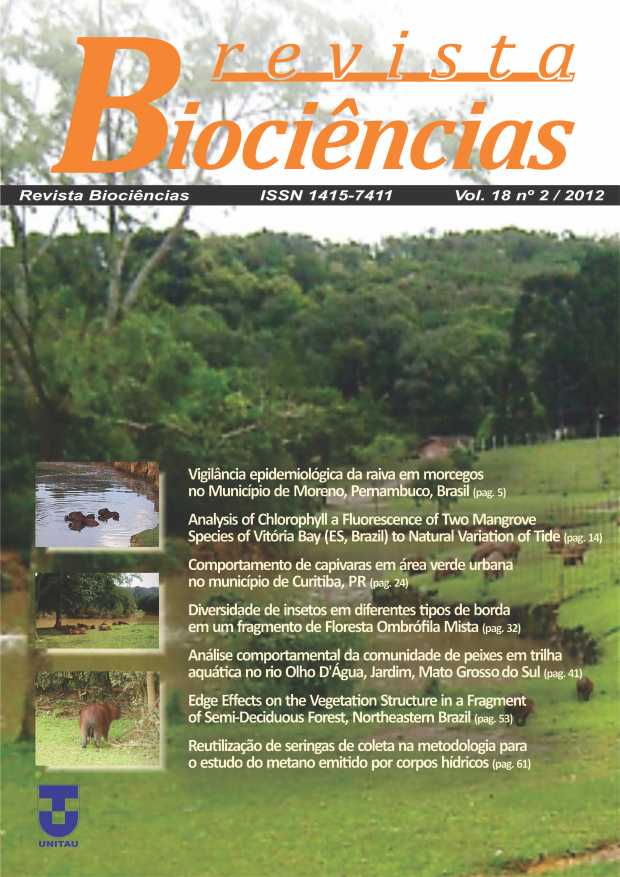Analysis of Chlorophyll a Fluorescence of Two Mangrove Species of Vitória Bay (ES, Brazil) to Natural Variation of Tide
Abstract
Leaf chlorophyll (Chl) a fluorescence parameters (JIP-test, initial fluorescence-Fo and potential quantum yield of PS2-Fv/Fm) of two mangroves species (Laguncularia racemosa Gaerth. and Rhizophora mangle L.) were compared in a basin forest, Vitória Bay (Brazil), during the dry and rainy seasons. Measurements were made three hours before high tide (H1), during high tide (H2) and three hours after high tide (H3) using a Handy-PEA fluorometer (Hansatech, UK). Leaves were dark-adapted before measurements. Increases in salinities caused a decrease in Fo and an increase of Fv/Fm in both species and seasons. Increases of salinity around 29.8 % (during H1), 64.45 % (H2) and 78.6 % (H3) (from dry to rainy season) caused an increasing of 12.3, 10.95 and 5.1 % of Fv/Fm values in L. racemosa and 1.4, 8.2 and 3.75 % in R. mangle (H1, H2 and H3, respectively). However, at H2, the energy fluxes for absorption (ABS/RC) and trapping (TR0/RC) were significantly reduced in L. racemosa. Reductions in ABS/RC result in increase in antenna size of active RCs. In this study, reductions in ABS/RC were consistent to increases in Fv/Fm and reductions of energy dissipation at antenna chlorophyll level (DI0/RC), which would explain the decline on Fo values. Fluctuations in salinity level of water during the day induced functional changes of PS2 in both species of mangroves. However, the slight variation of Fv/Fm in L. racemosa (from 12.3 % in H1 to 10.95 % in H2) associated with the decline in ABS/RC, TR0/RC, and DI0/RC indicate increased tolerance to salt in L. racemosa, in response to changes in the amplitude of tide. Key words: basin forests, chlorophyll fluorescence, diurnal tide, JIP-testDownloads
Download data is not yet available.
Metrics
Metrics Loading ...
Downloads
How to Cite
Falqueto, A. R., Santos, P. N. dos, Fontes, R. V., & Silva, D. M. (2013). Analysis of Chlorophyll a Fluorescence of Two Mangrove Species of Vitória Bay (ES, Brazil) to Natural Variation of Tide. Journal of Biosciences, 18(2). Retrieved from https://periodicos.unitau.br/biociencias/article/view/1579
Issue
Section
Ciências da Natureza






